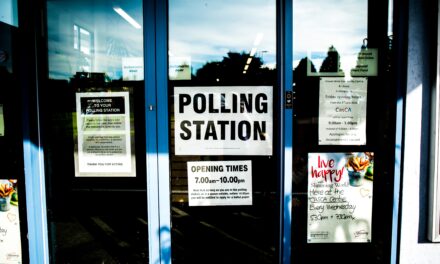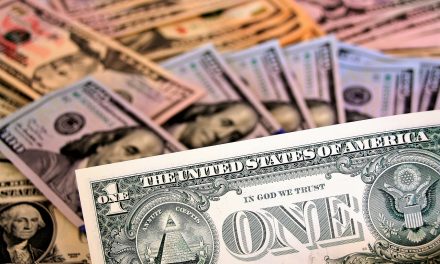Oct. 2, 2025-
Admittedly, the trade imbalance with China wasn’t the sole catalyst determining the outcome of the 2016 presidential election. But the election was a lesson in common sense — a complete repudiation of the country’s direction.
Unlike the erroneous and disingenuous claims by the media that the uneducated and uninformed elected Donald Trump or Hillary Clinton’s post-election assertion that FBI Director James Comey killed her chances, Mr. Trump won the Presidency because of several factors.
For instance, his election had to do with Hillary Clinton’s long pattern of alleged corruption and the insular arrogance of her campaign and most in her party who want to expand their Democrat power base – even if it’s at the expense of America’s future.
The group-think mentality of the liberal news media also played into Mr. Trump’s hands. His supporters have been and still are angry at the overt media bias.
Mr. Trump’s victory stemmed from his marketing slogan, “Make America Great Again,” and from his solutions for critical issues that influenced 60-million voters.
Creating hope
For them, his business background and philosophy created an environment of hope. That includes former supporters of Mr. Obama because they never realized benefits from the hope and change he promised in 2008.
Essentially, Mr. Trump’s core supporters – in the Rust Belt and other economically soft regions lacking in family wage jobs – wanted Mr. Trump to win for three reasons.
Common-sense Americans are sick and tired of the Democrats’ reign of politically correct terror, the movement for income redistribution, and the massive loss of good-paying jobs.
What they want is not to be treated as though they’re invisible. They’re inspired by Mr. Trump’s success.
His supporters also want level-headed strategies for economic growth and jobs instead of the left-wing no-growth mantra for income equality leading Americans to covet their neighbors’ cars, electronic gadgets, money, and prestige.
Yes, Mr. Trump campaigned on eliminating the onerous business regulations, cutting taxes, and increasing energy production.
But none will help the economy more than creating jobs by repairing America’s trade policies.
As a free-enterprise advocate, my sense has always been that it’s best to keep tariffs low and to break down all barriers to global commerce. And, yes, American consumers do benefit from less-expensive foreign products.
Unfortunately, U.S. exports simply do not equal imports.
Ironically, American workers are more productive than their foreign counterparts.
$500-billion trade deficit
But America has a $500-billion trade deficit; $375 billion of it with China.
The nation’s gross domestic product is decreased by $260 billion as a result of the reduced demand for American products and services.
Admittedly, advances in robotic technology are a factor. But essentially the trade deficit translated to a loss of 4-million American jobs.
GDP is additionally decimated by dormant companies and the laid-off workers to the tune of $130 billion.
Oil imports and the other trade deficits with China are the primary culprits.
To make America energy-independent, it would help to expand drilling in energy-producing states. (But decades of drilling in Oklahoma might explain the rash of earthquakes, which might be problematic.)
Solutions for Chinese obstacles
Mr. Trump is correct in opposing the Chinese currency manipulation, theft of intellectual property and their restriction of American investment and goods.
China’s devaluation of the yuan undercuts global competitors in making its exports cheaper. Part of China’s restriction of American goods stems from its high tariffs.
Strangely, Wall Street CEOs and Democrats have ridiculed Mr. Trump’s call for a 45-percent tariff on Chinese products.
Their lack of vision is perplexing. America’s GDP under the Obama Administration is the most anemic in history.
Mr. Trump knows the importance of renegotiating trade policies. His two strategies for China will not cost any taxpayer money.
Short-term, tax revenue will skyrocket and would offset his proposed tax cuts. This will lead to a dramatic improvement in the nation’s GDP and will create millions of jobs by the end of Mr. Trump’s term in office.
Long-term, the prospective economic benefits are eye-opening.
Sustained economic strength
American productivity, global leadership and innovation have all been influenced by businesses that invest in research and development.
R&D will again be a factor in turbo-charging the economy as Mr. Trump erases the trade deficit.
Firstly, he will deal with China’s average 9.6 percent tariff on American products. The U.S. average tariff on imports is 3.5 percent.
Secondly, unlike Presidents Obama and Bush, Mr. Trump will penalize China over its currency manipulation.
Mr. Trump is not advocating economic isolationism. He doesn’t want economic stagnation. Nor does he want to stifle competition and consumer choices.
He’s merely calling for economic common sense for America’s future. Democrats would be better off pursuing the principles of growth, not income redistribution.
From the Coach’s Corner, here are relevant public-policy articles:
‘Dirty Little Secrets’ Trump Hasn’t Told You about Economy — Donald Trump has pushed the envelope to say the least. Many businesspeople get it. So do entrepreneurs, and millions of different demographics of voters who are angry at the economic decline of America.
Like Nobility in the Age of Kings, Ruling Class Gets Trumped — Throughout history, there have been ruling classes in every region of the world. Noteworthy in Europe were the Dark Ages in which the ruling classes dominated ordinary, hardworking folks. That’s true for 21st century America. But like the Age of Enlightenment in the 1700s, America’s ruling class in 2016 is getting trumped by a voter revolt.
“A conservative is a liberal who got mugged the night before.”
-Frank Rizzo
__________






